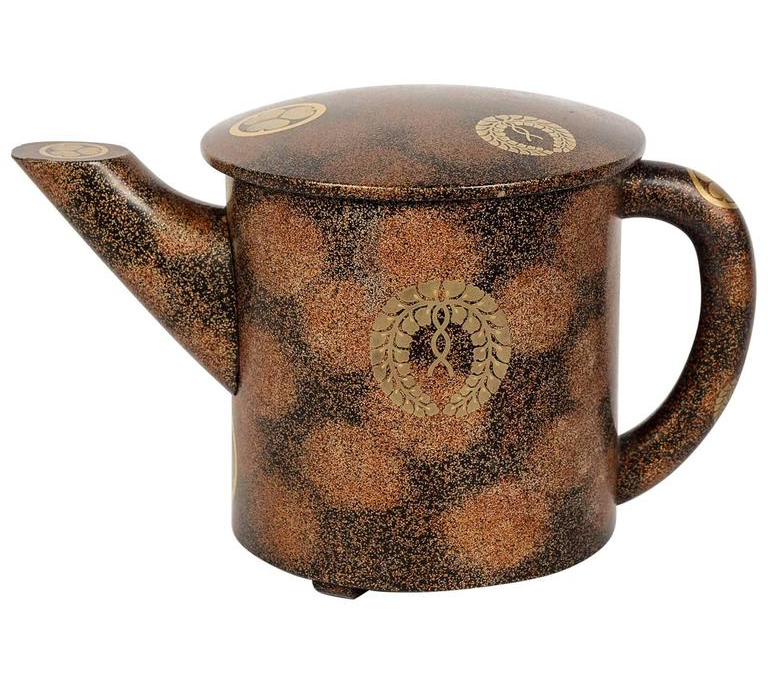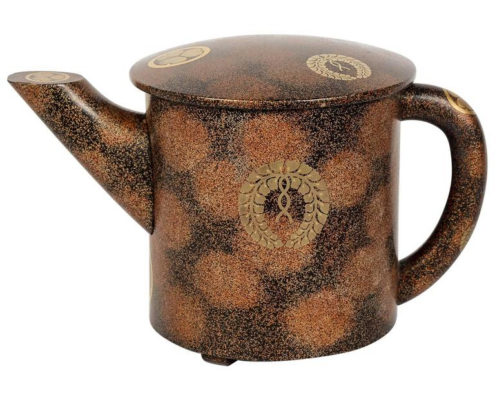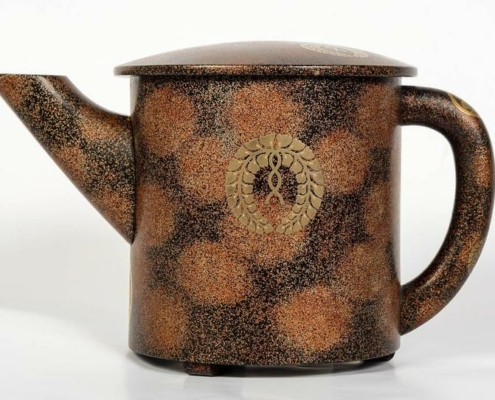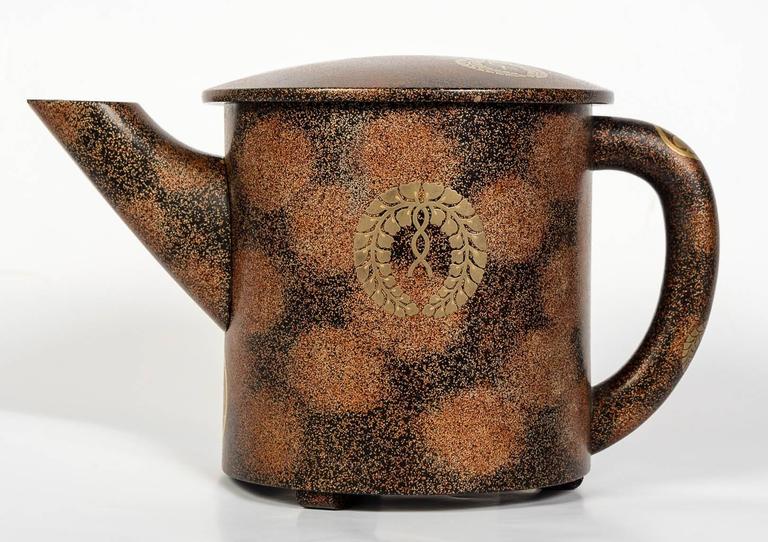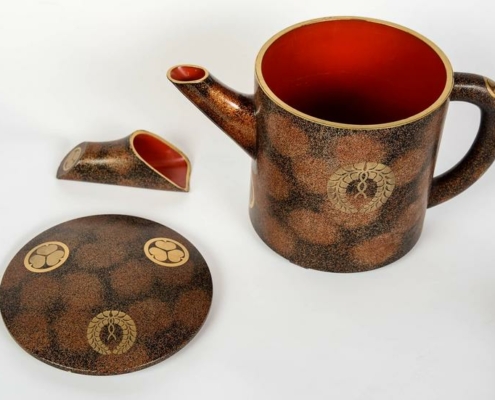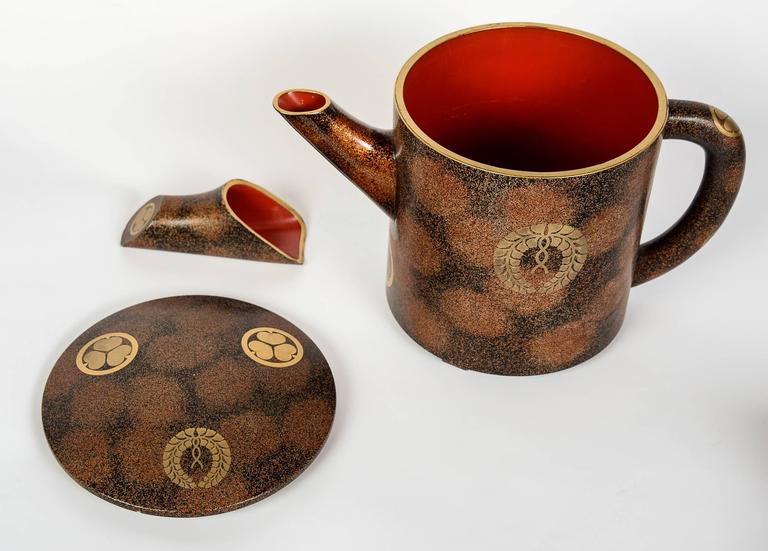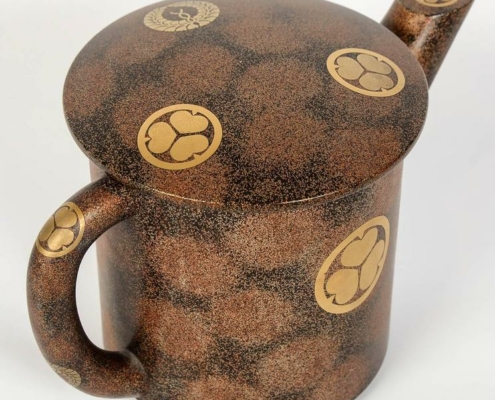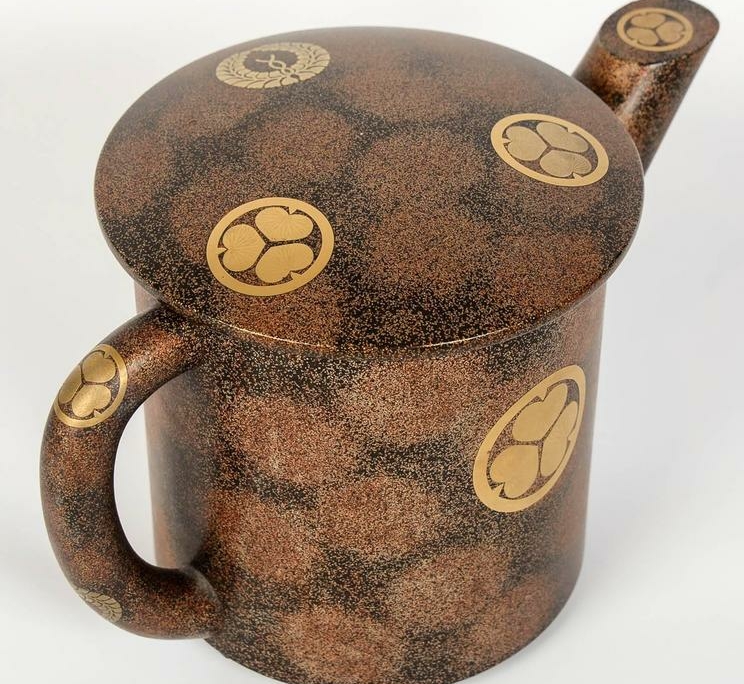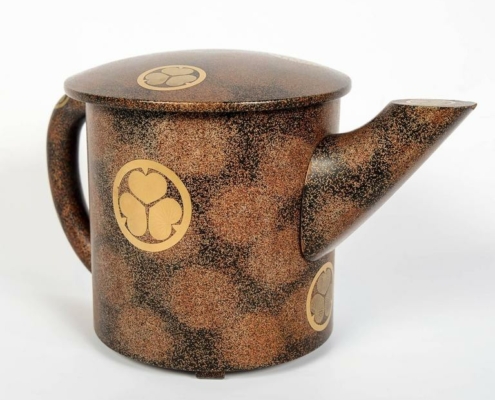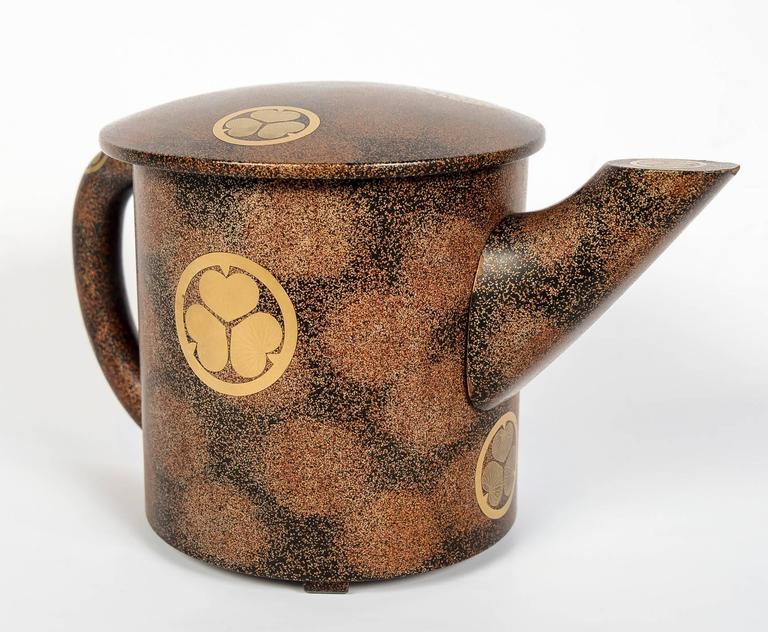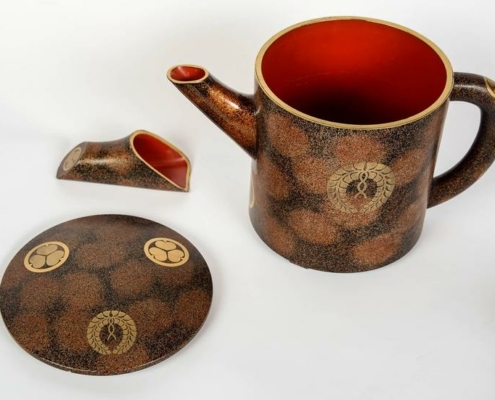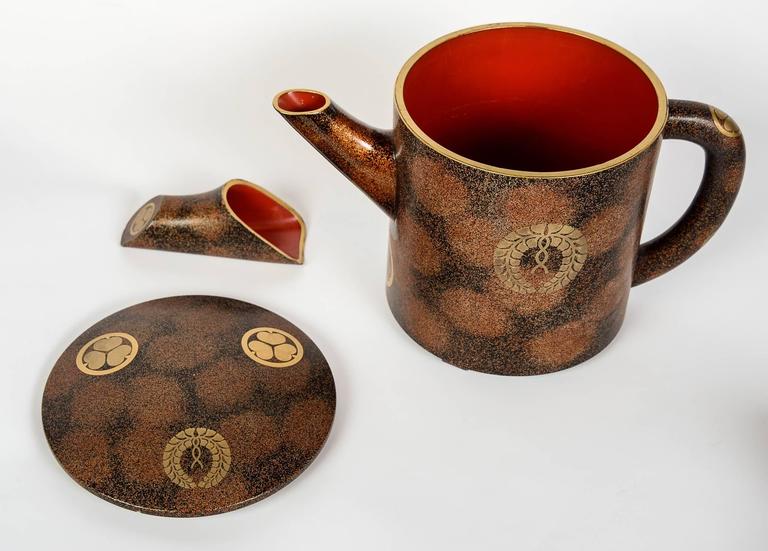NASHI-JI SAKE POURER – MEIJI
Reference: 2016-312
A nahi-ji and maki-e decorated wood lacquered lidded sake pourer (Hisage). The interior is in red lacquer. It is equipped of a sheath for the spout. Mons (emblem) Tokugawa and Daigo are represented on the lid, the extremity of the sheath, the handle and the two sides of the pourer.
Sakes pourers (Hisage) are traditional pitchers intended for sake (“rice beer”) service. Contrary to the tokkuri, a ceramic bottle also destined to the sake service, hisage have a spout and a handle, that look like highly as a teapot and may not have lid.
Japan – Meiji Era (1868-1912)
Height : 5.11 in / 13 cm – Diameter : 5.9 in / 15 cm




